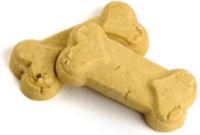Top 5 missed opportunities in nutritional management
Be sure you're taking every chance to help clients learn what to feed their pets.
Veterinary technicians are perfectly positioned to identify potential nutritional problems in their patients. And, as you know, proper nutrition is essential for maintaining pets' overall health and well-being. It helps them live longer, enhances their quality of life, and is an integral part of their ability to sustain adequate responses to disease or injury.
For those reasons, nutritional screening should be a part of a wellness examination in every pet. Incorporating the following nutritional assessment points into your medical routine requires little or no additional time or cost.
1. Assigning a body condition score
A body condition score (BCS) evaluates the overall condition of an animal based on fat and muscle seen and felt over specific regions of the animal's anatomy. Assign each patient a score, regardless of whether it appears overweight or underweight. Use the BCS not only to assess a patient's current status, but to track changes over time.

BCS charts are available using a point scale of either 1 to 5 or 1 to 9. A BCS of 1/5 or 1/9 represents a cachectic animal, while 5/5 or 9/9 is considered obese. For dogs, a BCS of 3/5 or 4-5/9 is ideal, while for cats, 3/5 or 5/9 is considered optimal. Whichever BCS chart you use, be consistent and ensure everyone working in your hospital is using the same system. Charts are available from many pet food manufacturers.
To assign a BCS, you'll need to visually examine and palpate the animal. Palpation is especially important in animals with thick coats, as visually they may appear to be of normal body condition or even overweight. Palpate for fat over the ribs and pelvic bones. In cats, also check for an abdominal fat pad. Compare your findings with the pictures on the BCS charts. (For pointers on what else to look out for when assessing a pet's BCS, visit dvm360.com/technutrition.)
Use the BCS as a tool to educate clients and improve compliance. Keep a supply of charts on hand to give to clients and teach them how to score their own pets—having to assign a score of 5/5 or 9/9 to their own pets will make a greater impact than simply being told their pets should be put on a diet.
2. Querying for diet history
While you're taking a patient's history, ask the owner questions regarding the cat or dog's current diet. (To see a list of essential nutrition-related questions, as well as learn about the new nutrition assessment guidelines developed by the American Animal Hospital Association, visit dvm360.com/technutrition) This will allow you to better determine whether the current diet is adequate and appropriate or whether the pet could benefit from a change. In the case of an obese animal, a good diet history can quickly identify the source of extra calories.

Be sure to keep updated pet food product guides on hand since manufacturers often add or discontinue diets or, in existing diets, change the percentage of protein and fat, calorie content, and even ingredients. Most large pet food manufacturers have updated guides available on request. It's also smart to bookmark a website or get a reference book that outlines values for human foods since owners often administer medication with calorie-rich human foods such as peanut butter (100 calories a teaspoon).
3. Ruling out snacks
Occasionally when reviewing a pet's diet history, you may find an appropriate amount of pet food is being fed, but the amount of treats and human food is significant enough to completely unbalance an animal's diet. For many people, sharing food with their pets is part of building the human-animal bond. So it's a mistake to tell clients to stop this behavior altogether. And frankly, doing so usually just doesn't work. Instead, give clients realistic guidelines. For example, consider calculating a pet's maintenance requirements, determining an appropriate amount of pet food, and then holding back a few calories per day (less than 10 percent of total calories) as a treat allowance.

Talk to pet owners about the types of treats they're offering. Most of the time, there will be a few healthy, low-calorie foods the pet will enjoy. Carrots and green beans are great choices for dogs, and some cats even enjoy them, too. A few commercial treats with only 3 calories a piece are also available. Once clients are assured they still can offer treats, they're more likely to remain compliant. (For two tips on allocating treats to pets, visit dvm360.com/technutrition.)
4. Focusing on puppies and kittens
Clients with puppies and kittens often ask many questions about what to feed, how often, and how much. Recommend high-quality diets that have been feed-trial-tested for growth. Your practice should keep a short list of products to recommend that are manufactured by companies you and your team trust and have used successfully. Types and amounts of foods recommended will be based on the age and breed of the puppy or kitten.

Growth, especially during the first six months of life, is one of the most critical stages in a pet's life and one in which nutrient requirements are the most stringent. Without guidelines from you and your practice team, it's easy for inexperienced owners to overfeed young, growing animals. This is an ideal time to show clients how to assign a BCS to their puppies and kittens to ensure the pets maintain a healthy weight as they grow to adulthood.
Remember to weigh and assign a BCS to the puppy or kitten each time it's presented for a wellness examination. Young, growing pets should be maintained at an ideal body condition (3/5 or 4-5/9). In short-coated dogs, the ribs should be easily palpated and only slightly visible. Since it is difficult to visually examine the flesh of long-haired dogs and cats, they will require further palpation to feel the ribs and trunk musculature.
Large- and giant-breed dogs are genetically predisposed to various orthopedic diseases and conditions. Studies have shown that maintaining an optimal lean body condition in puppies of these breeds can greatly reduce the severity and risk of developing these conditions. This usually involves maintaining protein levels, reducing energy consumption and mineral content in the diet, avoiding excess calcium in the diet, and feeding to an optimal body weight. Recommending an appropriate diet and teaching new owners how to feed to maintain the desired BCS are the best ways to guard against certain types of orthopedic problems in these dogs.
5. Cautioning about home-cooked diets
Despite the availability of many complete and balanced commercial diets prepared by companies with proven reputations, some people choose to cook for their pets. While these clients may have the best intentions, problems can occur when essential nutrients are not included in the home-cooked food. To help them understand the tremendous commitment involved in such a diet, inform them how difficult it is to provide the appropriate proportion and quality of protein, including specific amino acids, vitamins, and minerals.

Strongly discourage clients from feeding a home-cooked diet to puppies and kittens, as many recipes available have not been adequately tested to ensure the nutrients needed for growth are present. Be sure to emphasize that they should avoid raw-food diets. If a client still wants to feed a home-cooked diet to an adult pet, he or she should be directed to a reliable resource. Balanceit.com and PetDiets.com are two websites developed by board-certified veterinary nutritionists. Tell clients the recipes found on these sites must be strictly adhered to when preparing, because eliminating or substituting ingredients could severely unbalance the diet.
Clients want to feed their pets appropriately. As veterinary professionals, technicians can help by assessing a pet's nutritional needs, then educating owners on sound nutritional practices that can enhance a pet's qualify of life for years to come.
What "complete and balanced" means
When a commercial pet food is labeled "complete and balanced," it means the diet contains all the essential nutrients at levels that meet a pet's requirements. A claim of "complete and balanced" must gain the approval of the Association of American Feed Control Officials (AAFCO). Companies may use this claim on their labels if it can be substantiated in one of two ways.
The first option requires the pet food to undergo a series of stringent AAFCO-approved feeding trials. The second method requires the food be formulated to meet the minimum and maximum concentrations of nutrients established by the AAFCO's Nutrient Profiles for Dog and Cat Foods. For more on this, visit aafco.org.
Charlotte Higgins, CVT, is a nurse practitioner in nutrition at the MJ Ryan Veterinary Hospital of the University of Pennsylvania in Philadelphia. She's also a member of the organizing committee of the Academy of Veterinary Nutrition Technicians, which was recently recognized as a veterinary technician specialty.